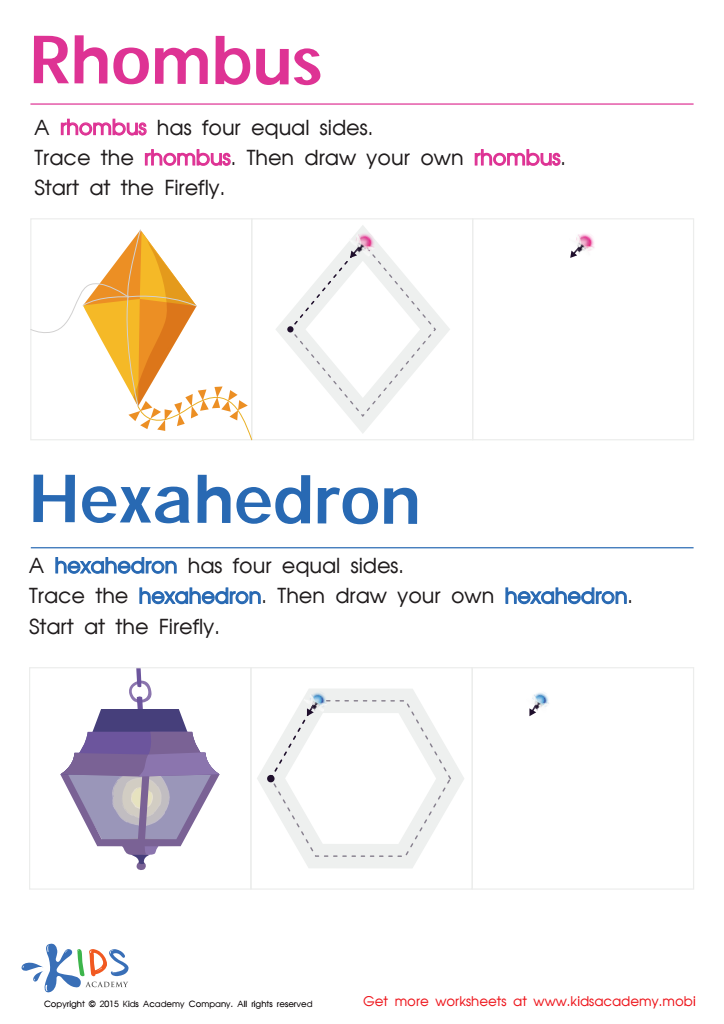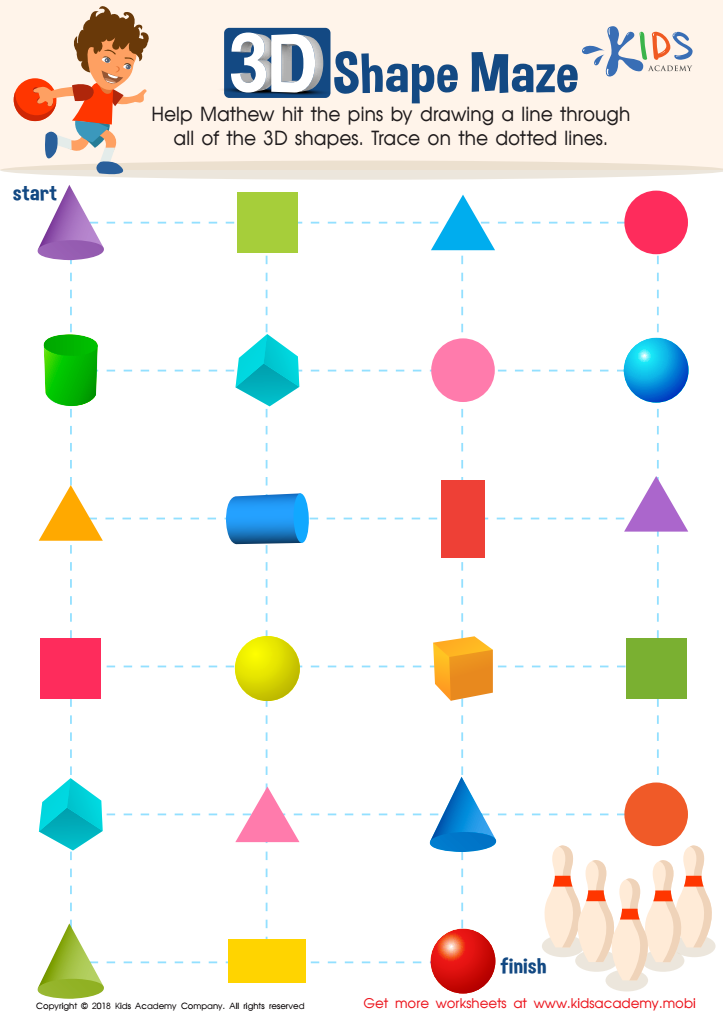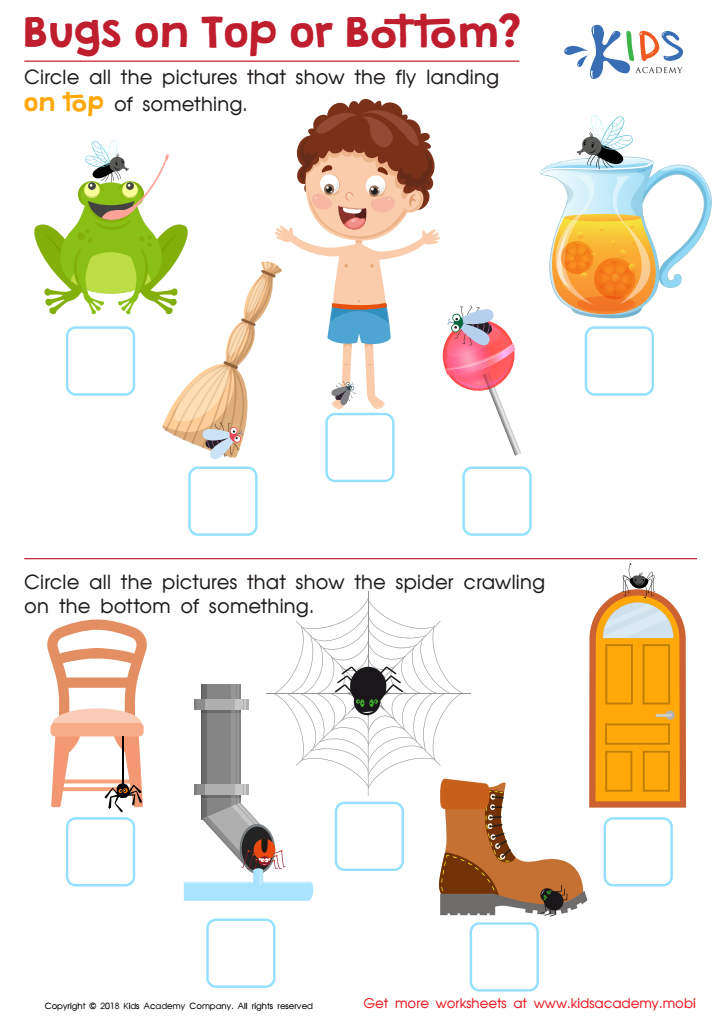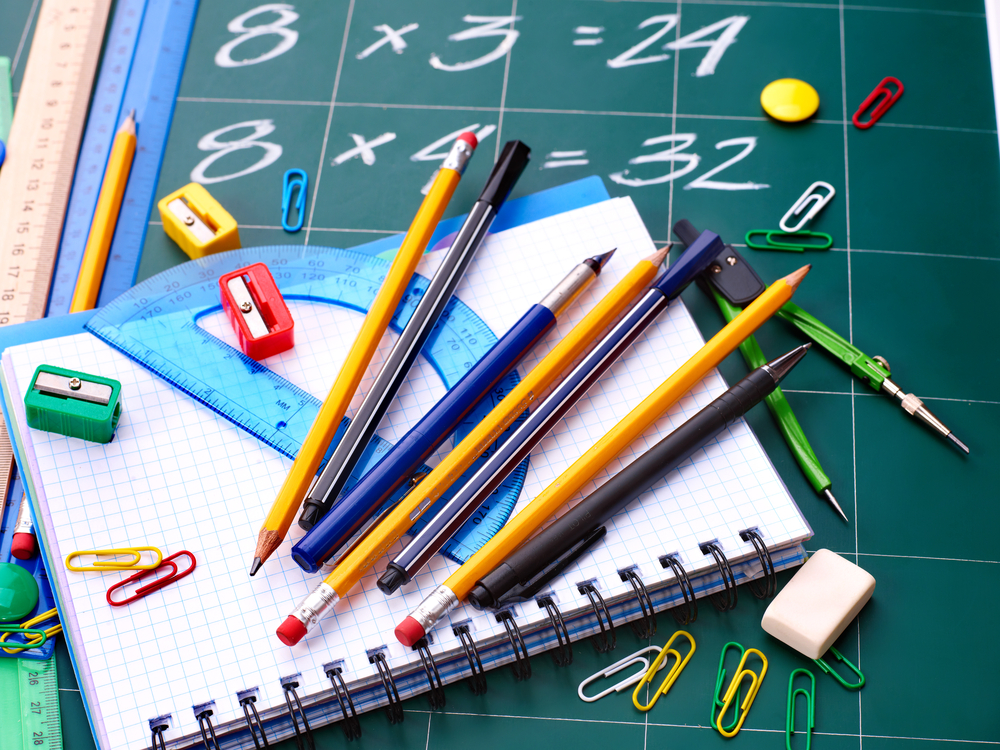Spatial reasoning Normal Math Worksheets for Ages 4-5
3 filtered results
-
From - To
Explore our engaging Spatial Reasoning Normal Math Worksheets designed specifically for children ages 4-5! These worksheets foster essential skills by introducing young learners to concepts of shapes, patterns, and spatial awareness. Through fun and interactive activities, children will enhance their ability to visualize and manipulate objects, laying a strong foundation for future mathematical understanding. Our resources are crafted to support early mathematical development in a playful manner, ensuring that learning is both effective and enjoyable. Perfect for home or classroom use, these worksheets provide a valuable tool to help young learners build confidence and a love for math. Start their journey today!


Draw a Rhombus And a Hexahedron Printable


Shapes Maze Geometry Worksheet


Bugs on Top or Bottom? Worksheet
Spatial reasoning is a crucial cognitive skill that enables children to understand and manipulate the visual world around them. For children aged 4 to 5, this skill lays the foundation for later mathematical concepts. Parents and teachers should care about spatial reasoning because it significantly influences young learners' abilities in geometry, measurement, and problem-solving.
At this age, children are highly receptive to learning through play and exploration. Engaging in activities that enhance spatial awareness, like building with blocks, solving puzzles, or participating in group games, not only makes learning fun but also promotes critical thinking and creativity. Developing spatial reasoning skills at a young age helps children interpret visual information, understand directions, and improve hand-eye coordination, all essential for school readiness.
Additionally, early math skills are often predictive of future success in mathematics and science—fields highly reliant on spatial reasoning. Parents and teachers should collaborate to create an enriching environment that fosters these skills through games, outdoor exploration, and everyday experiences. By prioritizing spatial reasoning, they are investing in their child's future academic achievements, thereby laying a solid groundwork for their lifelong learning journey.
 Assign to My Students
Assign to My Students




















